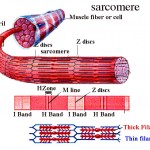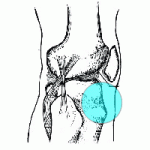How to regain your fitness after injury or illness
The quickest way to get your fitness back after a lay-off is to find a three-minute hill.
Let’s say that things are going really well with your training. You’re steadily getting fitter and racing faster as you get ready for that big race in a couple of months. But then – disaster strikes! Your Achilles tendon flares up, or you develop a monstrous case of the flu, or work pressures get out of control. Whatever the reason, you can’t train at all for a couple of weeks, and when you start working out again, there are only two to three weeks left before your key competition
How to Regain Fitness
What do you do to get your fitness back – or at least get as sharp as you can be before your race? There’s no sense returning to routine training; while it’s true that your regular work would eventually get you back in shape, you need the quickest-possible return to form, not a gradual progression. You need workouts which have the most dramatic impact on your fitness
As you think about what these workouts would be like, it’s important to remember that there are five paramount things you need to do to upgrade your capacity as an endurance athlete: you must improve your strength, power, VO2max, economy, and lactate threshold. All five will have been hurt by your lay-off, so all five will need shoring up if you’re really going to get back to where you were. Thus, the ‘return-to-form’ workouts should enhance all five variables, or at least four of them
That means – if your sport involves running – that you need to find a ‘three-minute hill’ – an incline which takes about three minutes for you to climb when you are moving at about your 5km race intensity
A three-minute hill? Why should you choose hill work over other forms of training, and why search for a hill which requires about three minutes to ascend? Well, the choice of hill training over flat-ground motion is fairly obvious. After all, you’ve lost economy and strength during your ‘down time’ and hill training is the best way to restore economy and build up specific strength in your leg muscles. It will do much more for you than merely cruising along on the flat
The uniqueness of three minutes
A THREE-minute hill is just right, because you need moderate-duration intervals to get back in shape. Since you’ve lost significant fitness, you’re not really ready for sustained, hard exertion or very long intervals. Modest-duration intervals also beat longer work intervals because you’ll be able to move faster during a three-minute interval than you could during a six-minute effort. Plus, when you get tired, you’ll be more willing to tackle one more three-minute interval, while a six-minute attempt would give you the shakes. A three-minute hill is also practical; it’s easier for most athletes to find a hill which takes three minutes to climb than it is to locate a six-minute hill. The latter is usually at least 1200m from bottom to top, and many individuals would have to drive or ride for hours to find such a promontory
In addition, the three-minute interval is long enough so that your rate of oxygen consumption will get to a very high level as you near the top of the hill. It also means that your climbs will be great for lifting VO2max (and also means that we now have three of the key variables covered with this quick-fix workout – strength, economy, and VO2max)
And what about lactate threshold (LT), the movement speed above which lactate begins to accumulate in the blood? No one has ever said that hill workouts are good for improving lactate threshold, but in fact they are an excellent way to do just that. And since hill training is sublime for economy, it must also have a very positive effect on LT.
Only power is left, and we’ll have to admit that our three-minute hill climbs can represent a prelude to power development but aren’t exactly optimal for power itself. That’s of course because for the endurance athlete improved power means sustained, faster movement, and when you climb hills you are usually moving along more slowly than you would on the flat. Thus, hill ascents don’t represent the fast, fast surges that are necessary for full blossoming of power, but they do build up the strength which can be transformed into power with subsequent training
Article by Dave Spence – Resident coach Cape Town
























